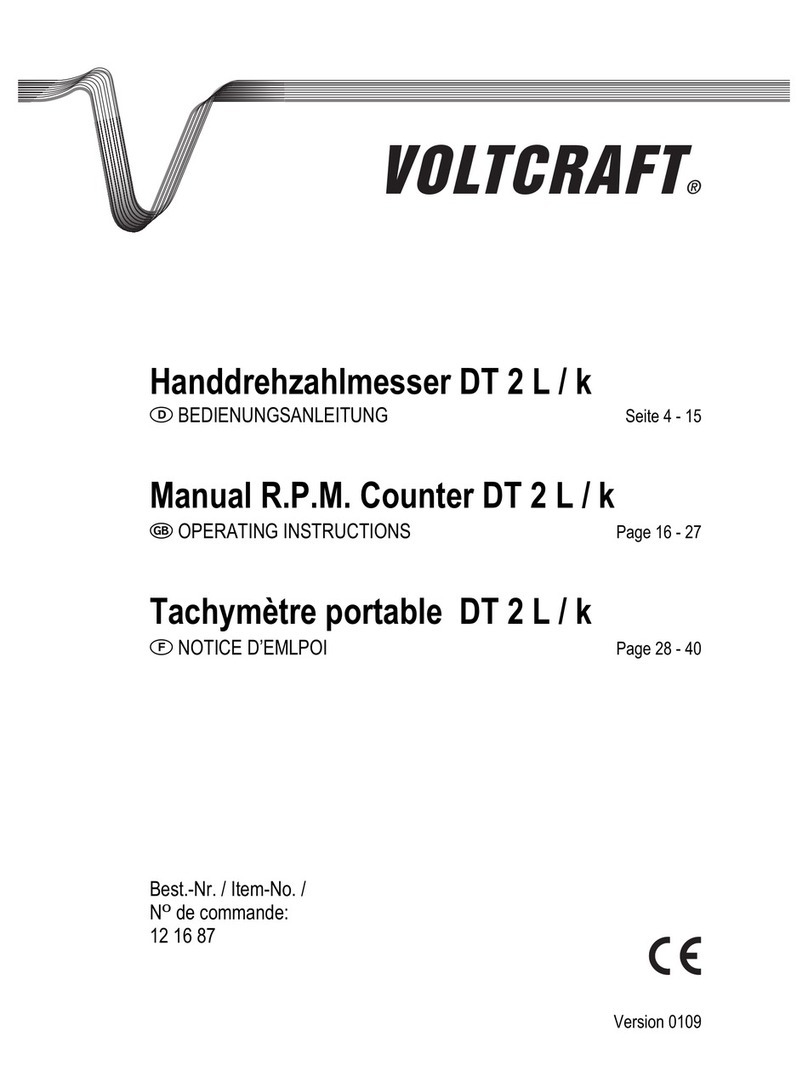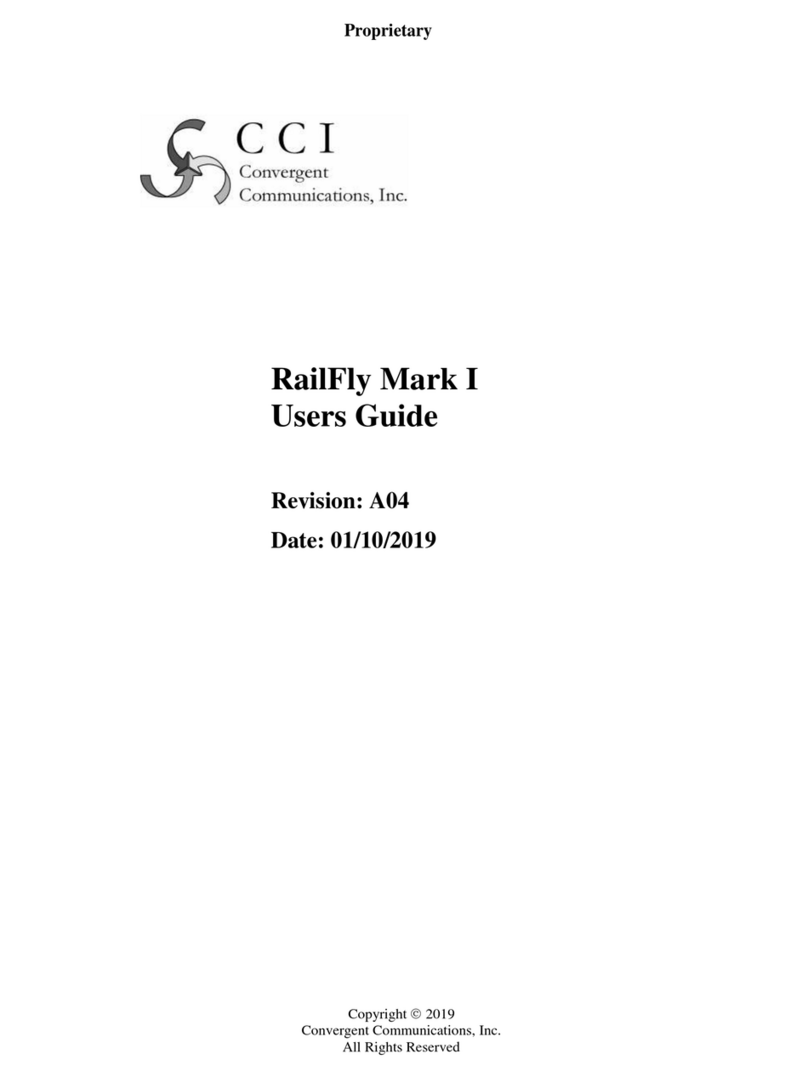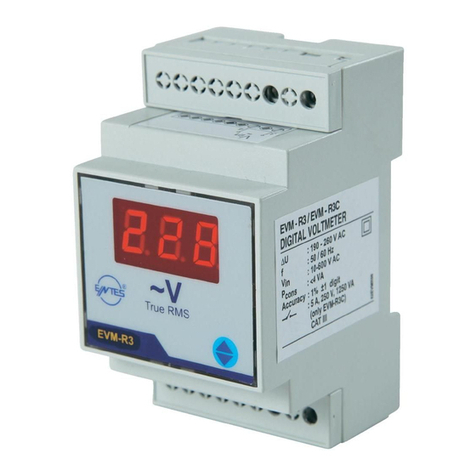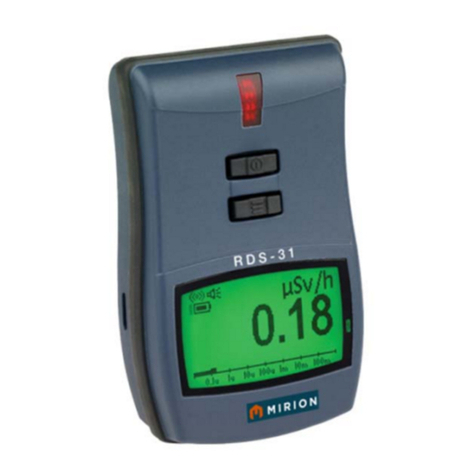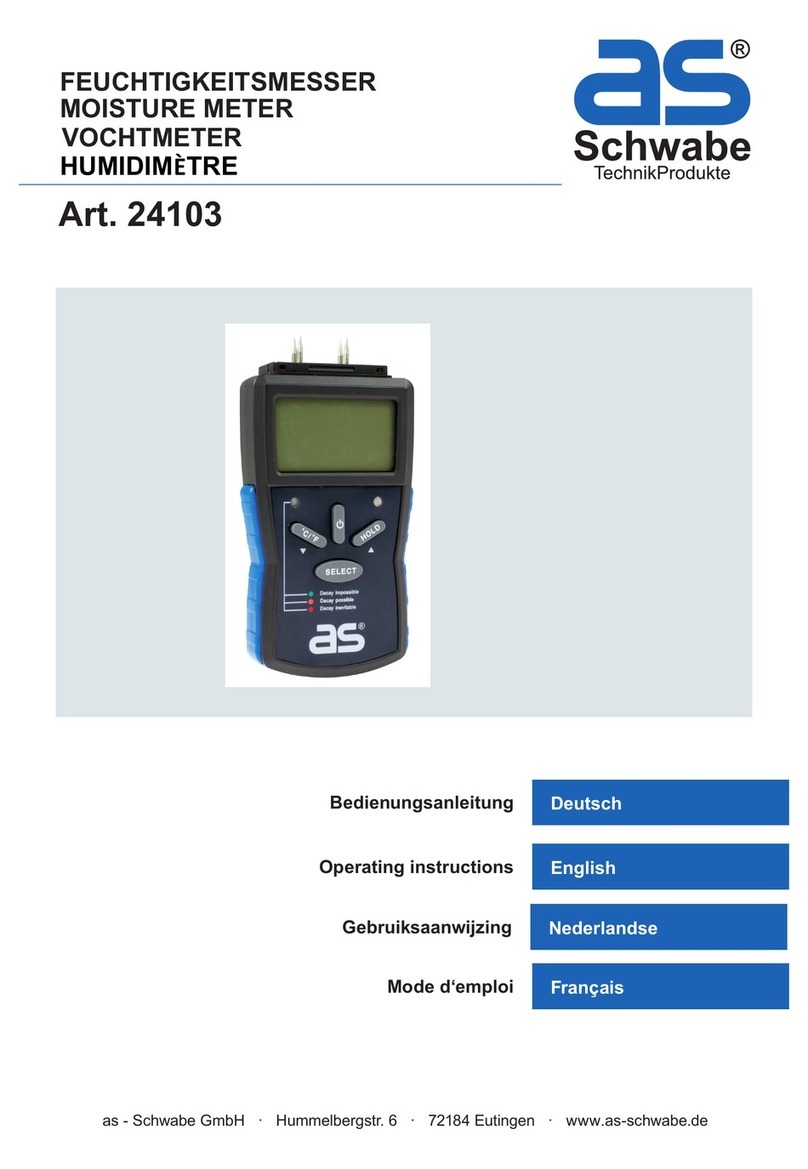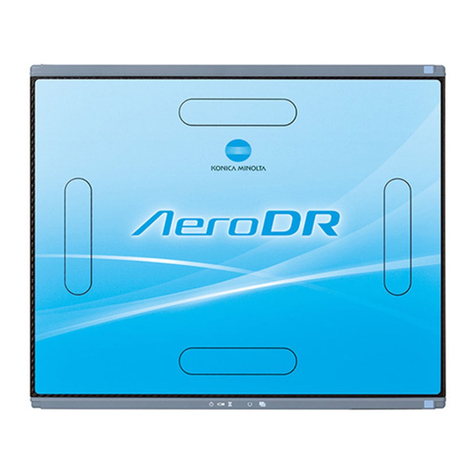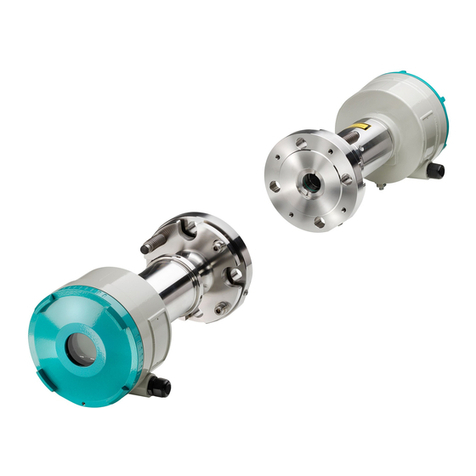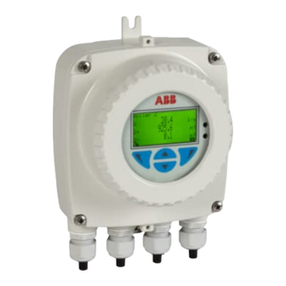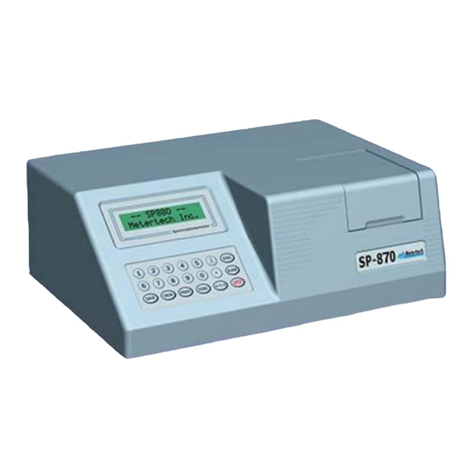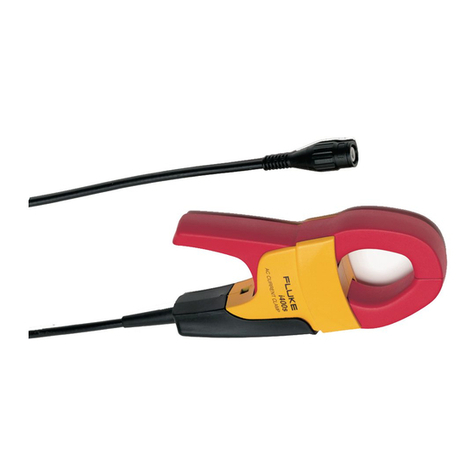echosens FibroScan XL+ Probe User manual

FibroScan
XL+
Probe
User
manual
CE
0459
E117M009.7
—
Version
7
—
02/2016

EU)
XL+
PROBE
USER
MANUAL
2
02/2016
-
ECHOSENS®
AND
FIBROSCAND
ARE
REGISTERED
TRADEMARKS
©
COPYRIGHT
ECHOSENS
ALL
RIGHT
RESERVED
E117M009.7

XL+
PROBE
USER
MANUAL
RSK)
TABLE
OF
CONTENTS
1.
PURPOSE
OF
THE
USER
MANUAL
5
1.1.
Symbols
used
in
the
manual
een
6
1.2.
Property
and
copyright
...0.1.0.1.100
니
이 어
아 아
아 어
아
아
아
아
아 아
아
아 이
이
라
이 이
다
이
아
이
아 아
아
어
아
아
아
이
아 이
아
에
이
이 이
이이
6
2.
WARNINGS
7
2.1.
Generality
iii
7
2.2.
Handling
the
probe
.Ne
7
2.3,Maintenance
.ee
7
3.
MISCELLANEOUS
INFORMATION
8
A
E
A
8
3.2.
Registered
trademarks
.ee
8
4.
INDICATIONS
AND
PRECAUTIONS
FOR
USE
9
4.1.
Intended
use...
eee
9
4.2.
Indications
for
use
..…..........................................
essences
10
4.3.
Probeandexamination
selection
criteria...............................................
12
4.4.
Precautions
for
USE..........oconoccncconccoconccnconcancnnonanonncnccnonoo
nono
nnnoonorccconan
cansan
on
rara
rccconnn
cono
13
4.5,User
training
.ee
14
4.6,
Electrical
Safety
.ee
14
4.7.
Maintenance-related
safety
.ee
14
5.
EXTERNAL
PRESENTATION
…
15
5.1.
Hardware
supplied...
sine
κκκκν
κο
15
5.2.
Probe
description...
sise
15
6.
USE
DURING
AN
EXAMINATION
17
6.1,User
recommandations
.ee
17
6.2.
Connecting
/
disconnecting
the
probe
ss
17
6.3.
Handlingtheprobe.....................................................
eee
erereemeseseseran
18
6.3.1.
Probe
resting
position...
nene
ee
eonnné
18
6.3.2.
Gripping
the
probe
sise
18
6.4,End
of
examination
.ee
19
7.
CLEANING,
MAINTENANCE
AND
REPAIRS
20
7.1,Cleaning
.es
20
7.1.1.
Cleaning
the
probe
(housing,
cable
and
transdUucer).................................
20
7.1.2.
Recommended
cleaning
products
ss
21
7.1.3.
Recommended
decontamination
solutions............................................
22
7.2.
Calibrating
the
probe
sas
23
7.3.
Troubleshooting..….........................
esse
23
E117M009.7
02/2016
-
ECHOSENS®
AND
FIBROSCAN®
ARE
REGISTERED
TRADEMARKS
©
COPYRIGHT
ECHOSENS
ALL
RIGHT
RESERVED
3


E117M009.7
XL+
PROBE
USER
MANUAL
FEMTE]
1.
PURPOSE
OF
THE
USER
MANUAL
This
User
Manual
has
no
contractual
value
whatsoever
and
under
no
circumstances
may
Echosens
be
held
responsible
on the
basis
of
the
information
contained
in
this
manual.
The
present
user
manual
details
all
of
the
information
required
for
the
implementation,
use
and
maintenance
of
the
probe
designed
to
be
connected
to
the
FibroScan.
Interpretation
of
the
displayed
data
is
covered
in
the
FibroScan
user
manual.
Thus,
after
carefully
reading
the
manual,
operators
shall
be
able
to:
и
connect
the
probe
to
the
FibroScan,
=
use
the
probe
in
accordance
with
technical
and
clinical
requirements,
=
carry
out
the
maintenance
work
of
the
probe.
Echosens
publishes
this
manual
"as
is",
without
guarantees
of
any
nature,
whether
explicit
or
implicit,
including,
but not
limited
to
implicit
guarantees
or
merchant
conditions,
or
adaptation
for
specific
use
in
view
of
providing
simple
and
accurate
information.
Consequently,
Echosens
cannot
accept
any
responsibility
for
the
manual's
incorrect
interpretation.
Though
all
efforts
have
been
made
to
offer
a
manual
that
is
as
accurate
as
possible,
the
manual
may
nevertheless
contain
some
technical
inaccuracies
and/or
typographical
errors.
Echosens
cannot,
under
any
circumstances,
be
held
responsible
for
any
loss
of
profit,
loss
of
business,
data
loss,
business
interruption,
or
for
any
indirect,
specific,
accidental
or
consecutive
damages
of
any
type.
In
the
event
of
damages
arising
from
a
defect
(imperfection)
or
error
contained
in
this
User
Manual,
Echosens
undertakes
to
send
the
physician,
as
rapidly
as
possible,
a
hard
copy
or
electronic
document
containing
all
corrections
made
to
this
manual.
This
manual
is
updated
on
a
regular
basis.
The
most
recent
version
of
this
manual
is
available
from
Echosens
on
request.
Should
any
major
modifications
be
made
to
the
manual,
however,
Echosens
undertakes
to
send
the
physician,
as
rapidly
as
possible,
a
new
copy
of
the
manual
in
hard
copy
or
electronic
format.
Note
that
this
does
not
involve
updating
the
hardware
and/
or
software
in
your
possession.
The
product
owner
must
keep
this
manual
for
as
long
as
the
product
is
used.
This
manual
contains
a
chapter
for
troubleshooting
the
most
commonly
encountered
problems.
Any
information
or
modification
requests
pertaining
to
this
manual
should
be
sent
to:
Echosens,
30
place
d'ltalie,
75013
PARIS
France.
02/2016
-
ECHOSENS®
AND
FIBROSCAN®
ARE
REGISTERED
TRADEMARKS
©
COPYRIGHT
ECHOSENS
ALL
RIGHT
RESERVED
5

(SUS)
XL+
PROBE
USER
MANUAL
1.1.
SYMBOLS
USED
IN
THE
MANUAL
个
This
symbol
means:
ATTENTION
Warning:
see
the
instructions
before
using
the
medical
device.
Instructions
preceded
by
this
symbol
may
cause
injuries
or
damage
the
medical
device
and
installation
if
not
correctly
followed.
This
symbol
means:
INFORMATION
Additional
information
with
no
impact
on
instrument
use.
1.2.
PROPERTY
AND
COPYRIGHT
All
manuals
and
documents
of
all
types
are the
property
of
the
company
Echosens
and
are
protected
by
copyright,
all
rights
reserved.
Your
right
to
copy
this
documentation
is
limited
to
legal
copyright.
These
manuals
cannot
be
distributed,
translated
or
reproduced,
either
in
whole
or
in
part,
in
any
manner
or
in
any
form,
without
prior
written
consent
from
Echosens.
Hence,
the
reproduction,
adaptation
or
translation
of
this
manual
without
prior
written
consent
is
prohibited,
within
the
limits
provided
by
copyright
law.
Copyright
O
—
11/2012
—
02/2016
—
Echosens
—
All
rights
reserved.
6
02/2016
-
ECHOSENS®
AND
FIBROSCAN®
ARE
REGISTERED
TRADEMARKS
©
COPYRIGHT
ECHOSENS
ALL
RIGHT
RESERVED
E117M009.7

XL+
PROBE
USER
MANUAL
ΕΠΕΤΕ]
2.
WARNINGS
2.1.
GENERALITY
个
Caution:
Federal
law
restricts
this
device
to
sale
by
or
on the
order
of
a
physician.
2.2.
HANDLING
THE
PROBE
The probe
is
a
fragile
electromechanical
device
that
must
be
handled
with
care
A
and
kept
away
from
liquids.
Between
two
examinations,
it
should
be
placed
on
its
holder
on
the
FibroScan.
In
the
event
of
prolonged
non-use,
the
probe
should
be
stored
in
its
case.
2.3.
MAINTENANCE
Maintenance
operations must
not
be
performed
by
a
third
party
other
than
a
technician
authorized
by
Echosens.
The
probe
must
be
calibrated
periodically.
Beyond
the
period
indicated
on
the
calibration
certificate,
the
manufacturer
no
longer
guarantees
the
performance
characteristics
of
the
probe.
E117M009.7
02/2016
-
ECHOSENS®
AND
FIBROSCAN®
ARE
REGISTERED
TRADEMARKS
©
COPYRIGHT
ECHOSENS
ALL
RIGHT
RESERVED
7

EET
XL*
PROBE
USER
MANUAL
3.
MISCELLANEOUS
INFORMATION
3.1.
GUARANTEE
The
terms
of
guarantee
are
stated
in
the
Echosens
terms
of
sale
documenis.
For
any
reguest,
Echosens
remains
available
to
the
physician
and
his/her
appointees
and
shall,
if
applicable,
transfer
the
request
to
a
competent
local
representative.
3.2.
REGISTERED
TRADEMARKS
Echosens
and
FibroScan
are
registered
trademarks
of
the
company
Echosens.
8
02/2016
-
ECHOSENS®
AND
FIBROSCAN®
ARE
REGISTERED
TRADEMARKS
©
COPYRIGHT
ECHOSENS
ALL
RIGHT
RESERVED
E117M009.7

XL+
PROBE
USER
MANUAL
[BIS]
4.
INDICATIONS
AND
PRECAUTIONS
FOR
USE
4.1.
INTENDED
USE
The
FibroScan
system
with
the
XL+
probe
is
an
active,
non-implantable
medical
device
using
ultrasound.
This
device
is
designed
to
be
used
in
a
doctor's
office.
The
FibroScan
system
with
the
XL+
probe
is
intended
to
provide
50
Hz
shear
wave
speed
measurements
and
estimates
of
tissue
stiffness
as
well
as
3.5
MHz
ultrasound
coefficient
of
attenuation
parameter
(CAP:
Controlled
Attenuation
Parameter)
in
internal
structures
of
the
body.
The
FibroScan
device
is
based
on the
Vibration-Controlled
Transient
Elastography
principle
(VOTE
M).
The
FibroScan
probe
comprises
a
single-element
ultrasound
transducer
mounted
on the
shaft
of
the
electrodynamic
transducer.
This
transducer
generates
a
transient
vibration,
which
in
turn
generates
an
elastic
shear wave.
This
wave
propagates
through
the
skin,
the
subcutaneous
tissues,
and
then
the
liver.
During
shear
wave
propagation,
the
ultrasound
transducer
performs
a
series
of
ultrasound
acquisitions
(emission
/
reception)
to
measure
the
speed
of
shear
wave
propagation
(Vs)
in
m/s.
This
measurement
corresponds
to
the
spatial
and
temporal
average
speed
of
propagation
of
the
shear
wave
through
the
liver
region
of
interest,
which
can
be
approximated
by
a
cylinder
with
a
diameter
of
1
cm
and
a
length
of
4
cm
(which
corresponds
to
about
3
cm?).
In
addition,
assuming
that
the
liver
is
a
pure
elastic,
linear
and
isotropic
medium,
the
device
converts
shear
wave
speed
Vs
into
equivalent
stiffness
E
in
kPa
using
the
equation
E=3xpx
Vs?
with
p
the
medium
density
assumed
to
be
1000
kg/m3.
The
values
for
shear
wave
speed
and
equivalent
stiffness
(or
Young’s
modulus)
are
relative
indexes
intended
only
for
the
purpose
of
comparison
with
other
measurements
performed
using
FibroScan
devices.
Concomitantly,
the
ultrasound
acquisitions
are
used
to
assess
the
Controlled
Attenuation
Parameter
(CAP).
Ultrasound
attenuation
corresponds
to
the loss
of
energy
as
ultrasound
propagates
through
the
medium.
Due
to
attenuation,
the
intensity
of
emitted
ultrasound
(lo)
decreases
exponentially
with
depth
(z):
lz
=
lo
x
exp
(-
a(f)
x
z)
where
Iz
is
the
ultrasound
intensity
at
depth
z,
a
is
the
frequency
(f)
dependent
attenuation
coefficient.
Ultrasound
attenuation
depends
principally
on
(i)
the
ultrasound
frequency,
(ii)
the
properties
of
the
medium
of
propagation.
CAP
assesses
the
value
of
a
at
the
frequency
f
=
3.5
MHz
and
is
expressed
in
dB/m.
Absolute
values
for
these
measurements
may
vary
among
measurement
devices
produced
from
different
manufacturers.
E117M009.7
02/2016
-
ECHOSENS®
AND
FIBROSCAN®
ARE
REGISTERED
TRADEMARKS
©
COPYRIGHT
ECHOSENS
ALL
RIGHT
RESERVED
9

(0S
xL+
PROBE
USER
MANUAL
4.2.
INDICATIONS
FOR
USE
FibroScan
is
indicated
for
noninvasive
measurement
in
the
liver
of
50
Hz
shear
wave
speed
and
estimates
of
stiffness
as
well
as 3.5
MHz
ultrasound
coefficient
of
attenuation
(CAP:
Controlled
Attenuation
Parameter).
The
shear
wave
speed
and
stiffness,
and
CAP
may
be
used
as
an
aid
to
clinical
management
of
adult
patients
with
liver
disease.
Shear
wave
speed
and
stiffness
may
be
used
as
an
aid
to
clinical
management
of
pediatric
patients
with
liver
disease.
How
to
use
a
probe:
A:
Ultrasound
transducer.
B:
Electrodynamic
transducer.
C:
Liver.
The
values
obtained
must
be
interpreted
by
a
physician
experienced
in
dealing
with
liver
disease,
taking
into
account
the
complete
medical
record
of
the
patient
and
the
potential
presence
of
different
factors
known
to
influence
liver
shear
wave
speed
or
equivalent
stiffness
and
CAP.
Based
on the
existing
literature
the
following,
table
1
provides
a
list
of
parameters
known
to
increase
liver
shear
wave
speed
and
stiffness.
Table
1:
parameters
related
to
shear
wave
speed
and
stiffness.
Parameter
Reference
Liver
fibrosis,
cirrhosis
[1-9]
Acute
hepatitis,
inflammation,
ALT
flares
|
[10-13]
Portal
pressure,
central
venous
pressure
| [14-16]
Extra
hepatic
cholestasis
[17]
Congestion
(heart
failure)
[18]
Meal
intake
[19]
Amyloidosis
때
[20-22]
For
shear
wave
speed
measurement,
the
intra
and
inter-operator
agreement
has
been
assessed
in
a
cohort
of
200
adult
patients
with
chronic
liver
disease
of
various
etiologies
[23].
The
intraclass
correlation
coefficient
was
0.98 both
within
and
between
operators.
Moreover,
in
a
cohort
of
31
NASH
children,
a
0.96
inter-operator
intra
class
correlation
coefficient
was
found
[24].
This
demonstrates
that
intra
operator
reproducibility
is
excellent
for
shear
wave
speed
and
stiffness
measurements
and
that
changing
the
operator
does
not
increase
measurement
variability
both
in
adults
and
children.
[1]
Friedrich-Rust,
M.,
et
al.,
Performance
of
transient
elastography
for
the
staging
of
liver
fibrosis:
a
meta-analysis.
Gastroenterology,
2008.
134(4):
p.
960-74.
10
02/2016
-
ECHOSENS®
AND
FIBROSCAN®
ARE
REGISTERED
TRADEMARKS
©
COPYRIGHT
ECHOSENS
ALL
RIGHT
RESERVED
E117M009.7

XL+
PROBE
USER
MANUAL
BSK)
[2]
Musso,
G.,
et
al.,
Meta-analysis:
Natural
history
of
non-alcoholic
fatty
liver
disease
(NAFLD)
and
diagnostic
accuracy
of
non-invasive
tests
for
liver
disease
severity.
Annals
of
Medicine,
2011.
43(8):
p.
617-49.
[3]
Shaheen,
et
al.,
FibroTest
and
FibroScan
for
the
Prediction
of
Hepatitis
C-Related
Fibrosis:
A
Systematic
Review
of
Diagnostic
Test
Accuracy.
American
Journal
of
Gastroenterology,
2007:
p.
1-12.
[4]
Shi,
K.Q.,
et
al.,
Transient
elastography:
a
meta-analysis
of
diagnostic
accuracy
in
evaluation
of
portal
hypertension
in
chronic
liver
disease.
Liver
Int,
2013.
33(1):
p.
62-71.
[5]
Smith,
J.O.
and
R.K.
Sterling,
Systematic
review:
Non-invasive
methods
of
fibrosis
analysis
in
chronic
hepatitis
C.
Alimentary
Pharmacology
and
Therapeutics,
2009.
30(6):
p.
557-76.
[6]
Stebbing,
J.,
et
al.,
A
Meta-analysis
of
Transient
Elastography
for
the
Detection
of
Hepatic
Fibrosis.
Journal
of
Clinical
Gastroenterology,
2010.
44(3):
p.
214-9.
(7)
Talwalkar,
J.A.,
et
al.,
Ultrasound-based
transient
elastography
for
the
detection
of
hepatic
fibrosis:
systematic
review
and
meta-analysis.
Clinical
Gastroenterology
and
Hepatology
2007.
5(10):
p.
1214-20.
[8]
Tsochatzis,
E.A.,
et
al.,
Elastography
for
the
diagnosis
of
severity
of
fibrosis
in
chronic
liver
disease:
A
meta-analysis
of
diagnostic
accuracy.
Journal
of
Hepatology,
2011.
54(4):
p.
650-9.
[9]
Lee,
C.K.,
et
al.,
Serum
Biomarkers
and
Transient
Elastography
as
Predictors
of
Advanced
Liver
Fibrosis
in
a
United
States
Cohort:
The
Boston
Children's
Hospital
Experience.
The
Journal
of
pediatrics,
2013.
163(4):
p.
1058-64.
[10]
Arena,
U.,
et
al.,
Acute
viral
hepatitis
increases
liver
stiffness
values
measured
by
transient
elastography.
Hepatology,
2008.
47(2):
p.
380-4.
[11]
Coco,
B.,
et
al.,
Transient
elastography:
a
new
surrogate
marker
of
liver
fibrosis
influenced
by
major
changes
of
transaminases.
Journal
of
Viral
Hepatitis,
2007.
14(5):
p.
360-9.
[12]
Mueller,
S.,
et
al.,
Increased
liver
stiffness
in
alcoholic
liver
disease:
differentiating
fibrosis
from
steatohepatitis.
World
Journal
of
Gastroenterology,
2010.
16(8):
p.
866-72.
[13]
Sagir,
A.,
et
al.,
Transient
elastography
is
unreliable
for
detection
of
cirrhosis
in
patients
with
acute
liver
damage.
Hepatology,
2008.
47(2):
p.
592-5.
[14]
Carrión,
J.A.,
et
al.,
Transient
elastography
for
diagnosis
of
advanced
fibrosis
and
portal
hypertension
in
patients
with
hepatitis
C
recurrence
after
liver
transplantation.
Liver
Transplantation,
2006.
12(12):
p.
1791-8.
[15]
Millonig,
G.,
et
al.,
Liver
stiffness
is
directly
influenced
by
central
venous
pressure.
Journal
of
Hepatology,
2010.
52(2):
p.
206-10.
[16]
Vizzutti,
F.,
et
al.,
Liver
stiffness
measurement
predicts
severe
portal
hypertension
in
patients
with
HCV-related
cirrhosis.
Hepatology,
2007.
45(5):
p.
1290-7.
[17]
Millonig,
G.,
et
al.,
Extrahepatic
cholestasis
increases
liver
stiffness
(FibroScan)
irrespective
of
fibrosis.
Hepatology,
2008.
28(5).
[18]
Lebray,
P.,
et
al.,
Liver
stiffness
is
an
unreliable
marker
of
liver
fibrosis
in
patients
with
cardiac
insufficiency.
Hepatology,
2008.
48(6):
p.
2089.
[19]
Mederacke,
I.,
et
al.,
Food
intake
increases
liver
stiffness
in
patients
with
chronic
or
resolved
hepatitis
C
virus
infection.
Liver
International,
2009.
29(10):
p.
1500-6.
(20]
Janssens,
E.,
et
al.,
Hepatic
amyloidosis
increases
liver
stiffness
measured
by
transient
elastography.
Acta
Gastroenterologica
Belgica,
2010.
73(1):
p.
52-4.
02/2016
-
ECHOSENS®
AND
FIBROSCAND
ARE
REGISTERED
TRADEMARKS
©
COPYRIGHT
ECHOSENS
ALL
RIGHT
RESERVED
1
1

ETES
XL+
PROBE
USER
MANUAL
[21]
Lanzi,
A.,
et
al.,
Liver
AL
amyloidosis
as
a
possible
cause
of
high
liver
stiffness
values.
European
Journal
of
Gastroenterology
and
Hepatology,
2010.
22(7):
p.
895-7.
[22]
Loustaud-Ratti,
V.R.,
et
al.,
Non-invasive
detection
of
hepatic
amyloidosis:
FibroScan,
a
new
tool.
Amyloid,
2011.
18(1):
p.
19-24.
[23]
Fraquelli,
M.,
et
al.,
Reproducibility
of
transient
elastography
in
the
evaluation
of
liver
fibrosis
in
patients
with
chronic
liver
disease.
Gut,
2007.
56(7):
p.
968-73.
[24]
Nobili,
V.,
et
al,
Accuracy
and
reproducibility
of
transient
elastography
for
the
diagnosis
of
fibrosis
in
pediatric
nonalcoholic
steatohepatitis.
Hepatology,
2008.
48(2):
p.
442-8.
4.3.
PROBE
AND
EXAMINATION
SELECTION
CRITERIA
The
recommendations
for
using
the
probes
are
defined
by
the
following
patient's
morphological
data:
и
TP:
Thoracic
Perimeter
measured
at
the
xiphoid
using
a
tape
measure.
m
SCD:
Skin-to-Capsule
Distance
assessed
with
an
ultrasound
scanner
or
by
the
automatic
probe
selection
tool.
In
case
of
using
an
ultrasound
scanner,
SCD
should
be
measured
at
the
point
where
the
shear
wave
speed
is
measured
with
a
pressure
similar
to
the
one
used
with
the
FibroScan
probe.
In
case
of
using
the
automatic
probe
selection
tool,
please
refer
to
FibroScan
502
Touch
User
manual
(chapter
6.5.11.
Exam
type
selection
area).
It
is
not
recommended
to
use
any
means
to
compress
the
soft
tissues
merely
to
reduce
the
SCD.
Four
types
of
examination
are
available:
S1, S2,
M
and
XL.
They
correspond
to
specific
measurement
depths
that
take
into
account
the
liver's
depth
beneath
the
skin.
FibroScan®
Probe
Choice
Algorithm
NO
YES
AGE218
YEARS
Thoracie
Skin
Capsula
Perimeter
(TP)
Distance
(SCO)
measurement
measurement
NO
XLEXAM
In
all
cases,
Echosens
recommends
to
perform
10
valid
FibroScan
measurements.
12
02/2016
-
ECHOSENS®
AND
FIBROSCAN®
ARE
REGISTERED
TRADEMARKS
©
COPYRIGHT
ECHOSENS
ALL
RIGHT
RESERVED
E117M009.7

XL+
PROBE
USER
MANUAL
[BUS
4.4.
PRECAUTIONS
FOR
USE
The
following
instructions
must
be
followed
in
order
to
ensure
patient
safety.
Thus,
the
present
probe
designed
for
the
FibroScan
should
not
be
used
in
the
following
situations:
On
patients
under
18
years
old.
On
patients
with
skin-to-capsule
distance
(SCD)
less
than
25
mm
or
greater
than
35
mm.
On
an
organ
other than
the
liver.
The
eyes
and
mucosa
must
absolutely
be
avoided.
On
patients
with
active
implants
such
as
pacemakers,
defibrillators,
pumps,
etc.
On
wounds.
On
pregnant
women.
Moreover,
presence
of
ascites
between
the
probe
and
the
liver
may
prevent
from
obtaining
measurement
with
the
device.
The
clinical
personnel
must
follow
normal
safety
procedures.
The
FibroScan
examination
should
be
performed
prudently
using
the
principle
of
四
ALARA
(As
Low
As
Reasonably
Achievable).
E117M009.7
02/2016
-
ECHOSENS®
AND
FIBROSCAN®
ARE
REGISTERED
TRADEMARKS
©
COPYRIGHT
ECHOSENS
ALL
RIGHT
RESERVED
13

ETS
XL+
PROBE
USER
MANUAL
4.5.
USER
TRAINING
Only
persons
who
have
received
training
in
the
use
of
the
FibroScan
unit
and
who
possess
a
user
certificate
are
authorized
to
conduct
an
examination
using
FibroScan.
Training
is
essential
for
correct
equipment
use
and
in
order
to
obtain
reliable
and
reproducible
measurements.
This
manual
is
not
intended
to
provide
user
training.
4.6.
ELECTRICAL
SAFETY
The
probe,
designed
for
the
FibroScan,
has
been
manufactured
and
tested
in
accordance
with
IEC
electromagnetic
compatibility
(EMC)
and
electrical
safety
standards.
It
leaves
the
factory
in
full
compliance
with
safety
and
performance
requirements.
In
order
to
maintain
this
compliance
and
to
guarantee
the
safe
use
of
the
medical
device,
the
user
must
conform
to
the
indications
and
symbols
contained
in
this
manual.
Safe
use
is
no
longer
guaranteed
in
the
following
main,
non-exclusive
cases:
m
the
probe
is
visibly
damaged,
и
the
probe
does
not
work,
m
after
prolonged
storage
in
unfavorable
conditions,
m
after
serious
damage
incurred
during
transport.
When
safe
use
of
the
probe
is
no
longer
possible,
the
probe
must
be
taken
out
of
service.
Steps
must
be
taken
to
avoid
its
inadvertent
use.
The
probe
should
be
handed
to
authorized
technicians
for
inspection.
4.7.
MAINTENANCE-RELATED
SAFETY
For
all
maintenance
operations,
the
physician
and
his/her
appointees
should
contact
Echosens,
who
will
send
an
authorized
technician.
For
correct
and
safe
use
and
for
all
maintenance
operations,
the
personnel
must
conform
to
normal
safety
procedures.
14
02/2016
-
ECHOSENS®
AND
FIBROSCAN®
ARE
REGISTERED
TRADEMARKS
©
COPYRIGHT
ECHOSENS
ALL
RIGHT
RESERVED
E117M009.7

E117M009.7
XL+
PROBE
USER
MANUAL
[BTS
5.
EXTERNAL
PRESENTATION
5.1.
HARDWARE
SUPPLIED
When
opening
the
package,
ensure
the
contents
match
the
following
list:
m
Probe
and
case
=
User
Manual
5.2.
PROBE
DESCRIPTION
Housing
The
housing
contains
an
electrodynamic
transducer
(vibrator),
an
ultrasound
transducer
and
a
measurement
trigger
button.
Probe
housing:
A:
Electrodynamic
transducer.
B:
Measurement
button.
C:
Indicator
light
(LED).
D:
Ultrasonic
transducer.
The
ultrasound
transducer
of
the
probe
is
a
"Type
B"
applied
part,
and
is
the
only
component
of
the
FibroScan
unit
in
contact
with
the
patient.
Measurement
button
As
soon
as
this
button
is
pressed
(if
sufficient
pressure
is
exterted
on
the
transducer),
the
vibrator
actuates
the
electrodynamic
transducer,
which
in
turn
generates
a
shear
wave
(s-
wave)
that
painlessly
impacts
the
patient's
skin.
The
ultrasound
transducer
performs
a
series
of
acquisitions
(emission
/
reception)
to
measure
the
propagation
speed
of
this
shear
wave.
Acquisition
lasts
less
than
one
tenth
of
a
second.
02/2016
-
ECHOSENS®
AND
FIBROSCAN®
ARE
REGISTERED
TRADEMARKS
©
COPYRIGHT
ECHOSENS
ALL
RIGHT
RESERVED
15

EREUS
XL+
PROBE
USER
MANUAL
Indicators
The
indicator
lights
(LEDs)
display
a
status
as
follows:
=
On
during
FibroScan
start-up
and
when
standing
by
to
launch
an
exam.
m
Flashing
lights
for
the
probe
selected
when
an
exam
starts.
=
Switched
off
during
an
exam
when
the
operator
is
applying
an
incorrect
pressure
to
the
patient's
body.
в
On
during
an
exam
when
the
operator
is
applying
the
correct
pressure
to
the
patient's
body.
It
is
however
strongly
recommended
that
you
view
the
pressure
exerted
by
looking
at
the
on-screen
pressure
indicator.
Lead
A
B
Probe
lead:
A:
Connection
cable.
B:
Connection
jack.
This
1.5
m
lead
connects
the
probe
to
the
FibroScan
by
means
of
a
multi-pin
jack.
Ea
The
probe
transducer,
the
probe
jack,
and
the
FibroScan
connector
are
fragile
elements
and
must
be
handled
with
care.
The
probe
jack
has
a
red dot
that
should
be
aligned
with
the red dot
on
the
FibroScan
socket
before
insertion.
四
The
serial
number
marked
on
the
connector
identifies
the
probe
uniquely.
16
02/2016
-
ECHOSENS®
AND
FIBROSCAN®
ARE
REGISTERED
TRADEMARKS
@
COPYRIGHT
ECHOSENS
ALL
RIGHT
RESERVED
E117M009.7

XL+
PROBE
USER
MANUAL
[BIS]
6.
USE
DURING
AN
EXAMINATION
6.1.
USER
RECOMMANDATIONS
The
following
recommendations
must
be
followed
during
the
different
phases
of
an
examination.
m
Hold
the
probe
perpendicular
to
the
patient's
skin
during
the
measurements.
и
Avoid probe
impacts.
=
Do
not
immerse
the
probe.
=
Avoid
any
liquid
projections
on
the
medical
device.
=
Clean
and
decontaminate
the
probe
with
a
suitable
product
(see
paragraph
Cleaning,
maintenance
and
repairs).
m
Place
the
probe
after
use
in
one
of
the
holders
or
in
its
case.
6.2.
CONNECTING
/
DISCONNECTING
THE
PROBE
=
Location
of
the
probe
connector:
user
manual.
m
To
insert
the
probe
jack:
align
the
probe
lead
jack's
red dot
with
the
socket's
red
dot
and
insert
the
jack.
四
Both
the
jack
and
socket
are
fragile
elements.
Handle
with
care.
To
connect
the
probe
lead,
insert
the
jack
after
aligning
the red dots.
Connecting
the
probe:
A:
Red
dot
on
probe
socket.
B:
Red
dot
on
probe
jack.
=
To
disconnect
the
probe
jack:
first
pull
the
jack's
splined
sleeve
back
to
unlock
it,
then
pull
the
whole
jack
back.
E117M009.7
02/2016
-
ECHOSENS®
AND
FIBROSCAN®
ARE
REGISTERED
TRADEMARKS
©
COPYRIGHT
ECHOSENS
ALL
RIGHT
RESERVED
17

ETS
XL+
PROBE
USER
MANUAL
When
starting
an
exam,
be
sure
to
follow
the
instruction
in
this
message:
"Do
not
unplug
the
probe
until
the
end
of
the
exam.”
A
probe
may
be
disconnected
for
replacement
with
another
probe
between
two
examinations.
If
the
probe
is
disconnected
during
an
examination,
this
examination
is
automatically
closed.
Disconnecting
the
probe:
A:
Socket.
B:
Splined
sleeve.
6.3.
HANDLING
THE
PROBE
个
Refer
to
the
warnings
in
Chapter
2
concerning
the
handling
of
the
probe.
6.3.1.
Probe
resting
position
When
the
probe
is
not
in
use,
it
must
be
positioned
on
the
probe
holder,
as
shown.
Probe
resting
position.
6.3.2.
Gripping
the
probe
Hold
the
probe
as
shown.
During
measurements,
continuously
make
sure
that
the
probe
is
maintained
perpendicular
to
the
skin
surface
of
the
patient.
02/2016
-
ECHOSENS®
AND
FIBROSCAN®
ARE
REGISTERED
TRADEMARKS
©
COPYRIGHT
ECHOSENS
ALL
RIGHT
RESERVED
E117M009,7

XL+
PROBE
USER
MANUAL
ETE]
Gripping
the
probe:
A:
Patient.
B:
Operator.
C:
Probe.
6.4.
END
OF
EXAMINATION
Once
the
examination
is
complete,
proceed
as
follows:
Click
on the
button
below
to
deactivate
the
probe.
2.
Remove
any
excess
gel
in
holding
the
probe,
head
pointing
downwards.
Disinfect
the
probe
with
a
suitable
product
indicated
in
paragraph
Cleaning,
maintenance
and
repairs.
4.
Place
the
probe,
head
pointing
up,
onto
the
FibroScan
probe
holder.
If
the
device
is
no
longer
required:
=
Press
the
on/off
button
next
to
the
monitor
of
the
FibroScan.
=
Set
the
main
switch
to
the
0
position.
=
Disconnect
the
probe
as
indicated
in
paragraph
Connecting
/
disconnecting
the
probe.
m
Store
the
probe
in
its
case.
E117M009.7
02/2016
-
ECHOSENS®
AND
FIBROSCAN®
ARE
REGISTERED
TRADEMARKS
O
COPYRIGHT
ECHOSENS
ALL
RIGHT
RESERVED
19

ТЕ]
XL+
PROBE
USER
MANUAL
20
7.
CLEANING,
MAINTENANCE
AND
REPAIRS
In
the
event
of
malfunction,
only
the
staff
of
Echosens
or
its
local
representative
are
authorized
to
service
FibroScan
and
its
accessories. Any work
performed
by
an
unqualified
person
will
terminate
the
guarantee.
7.1.
CLEANING
Apply
the
following
recommendations
to
clean
or
disinfect
the
probe.
Failure
to
observe
these
recommendations
may
result
in
damage
to
the
probe,
which
will
then
no
longer
be
covered
by
the
guarantee.
Recommendations
=
Always
wear
eye
protection
and
gloves
to
prevent
injury.
=
Observe
the
expiry
dates
of
cleaning
products
and
decontamination
solutions.
=
Ensure
that the
contact
time
and
concentration
of
the
cleaning
product
and
decontamination
solution
are
appropriate
for
the
equipment
used.
Carefully
apply
the
instructions
given
on
the
label
of
the
cleaning
product
and
the
decontamination
solution.
=
Carefully
read
the
recommendations
from
the
Association
for
Professionals
in
Infection
Control
and
Epidemiology
(APIC)
and
the
Food
and
Drug
Administration
(FDA),
if
applicable
in
the
country.
7.1.1.
Cleaning
the
probe
(housing,
cable
and
transducer)
(a
Itis
not
necessary
to
switch
off
the
device
before
cleaning
the
probe.
Surfaces
must
be
cleaned
in
strict
compliance
with
the
following
procedure:
4
Gently
remove
the
gel
using
a
soft
cloth
or
wipe.
02/2016
-
ECHOSENS®
AND
FIBROSCAN®
ARE
REGISTERED
TRADEMARKS
©
COPYRIGHT
ECHOSENS
ALL
RIGHT
RESERVED
E117M009.7
Table of contents
Popular Measuring Instrument manuals by other brands
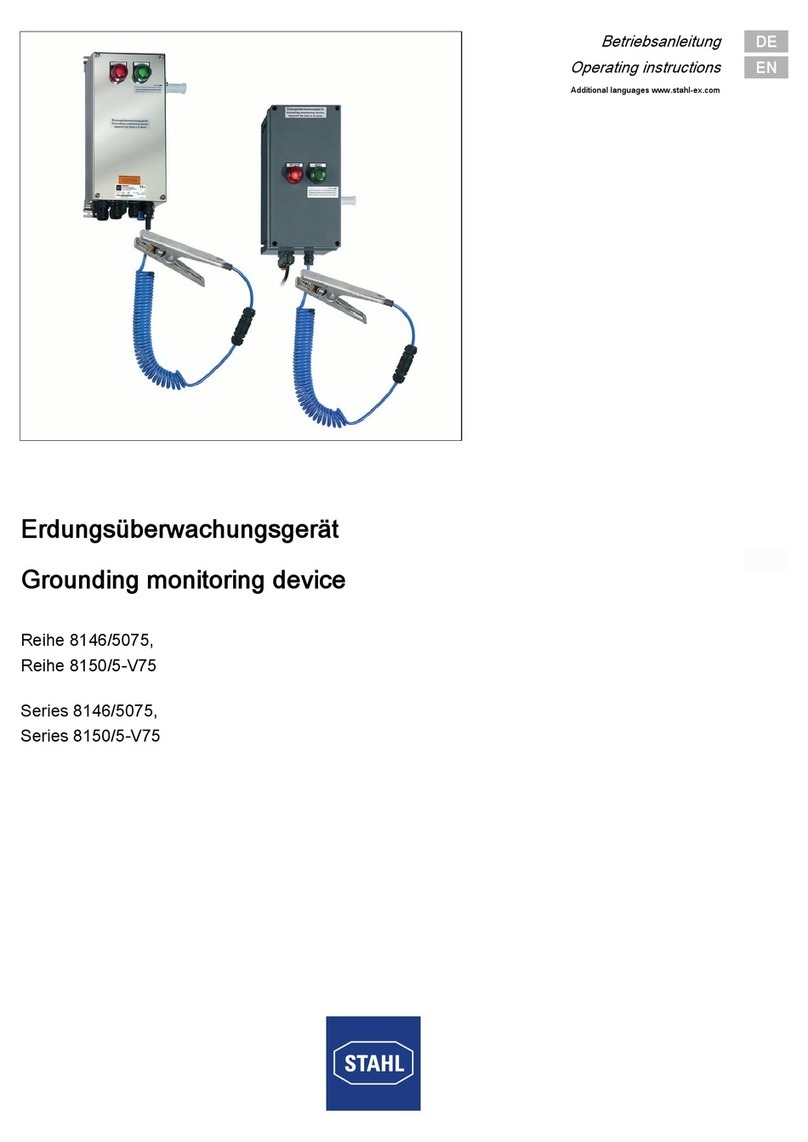
Stahl
Stahl Series 8146/5075 operating instructions
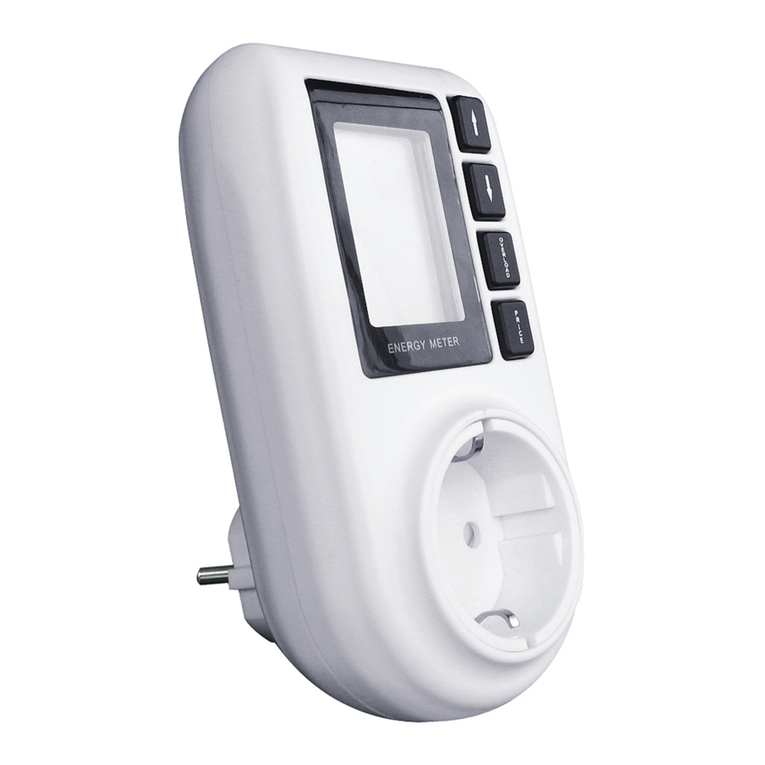
Intertek
Intertek SK410 user manual
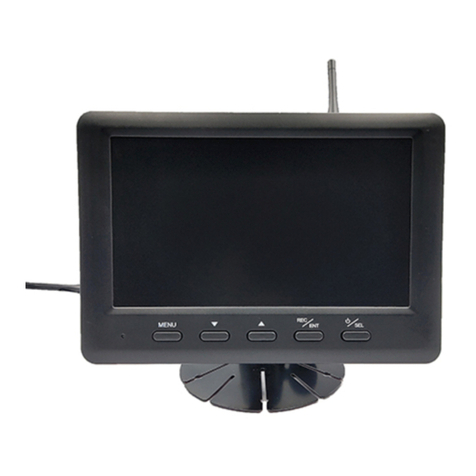
Zorg
Zorg 3201 Installation & operating manual
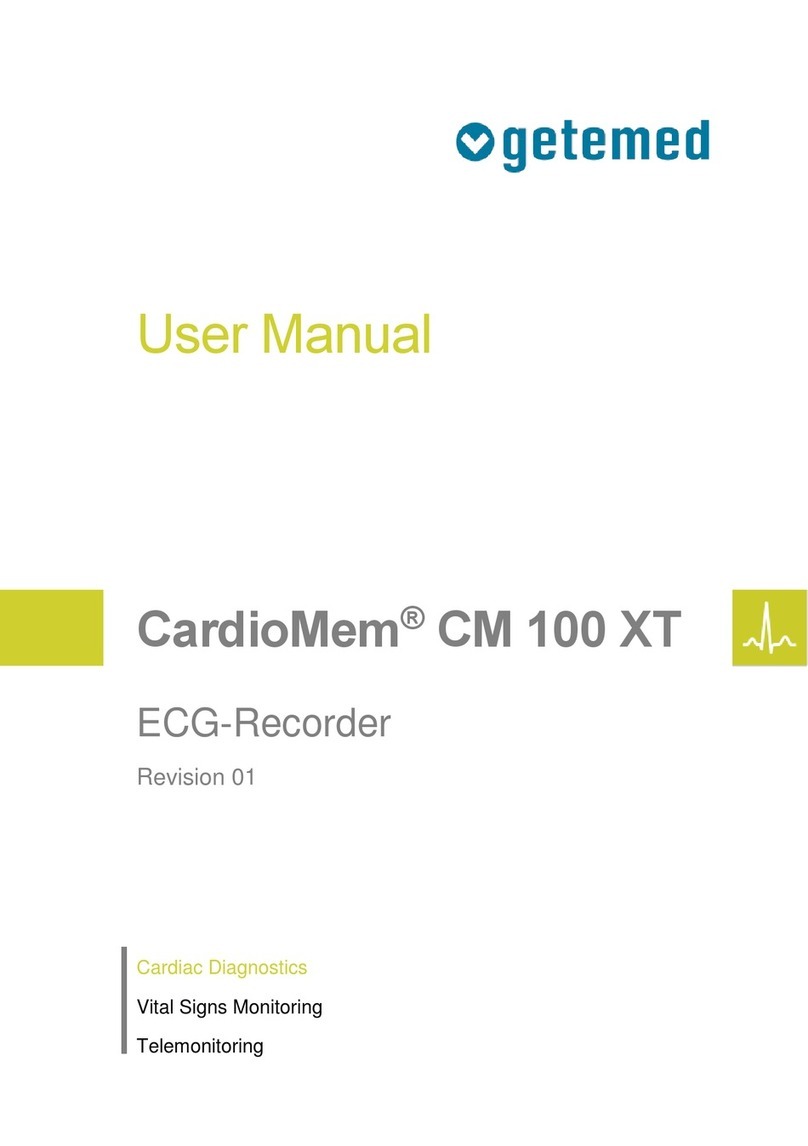
getemed
getemed CardioMem CM 100 XT user manual
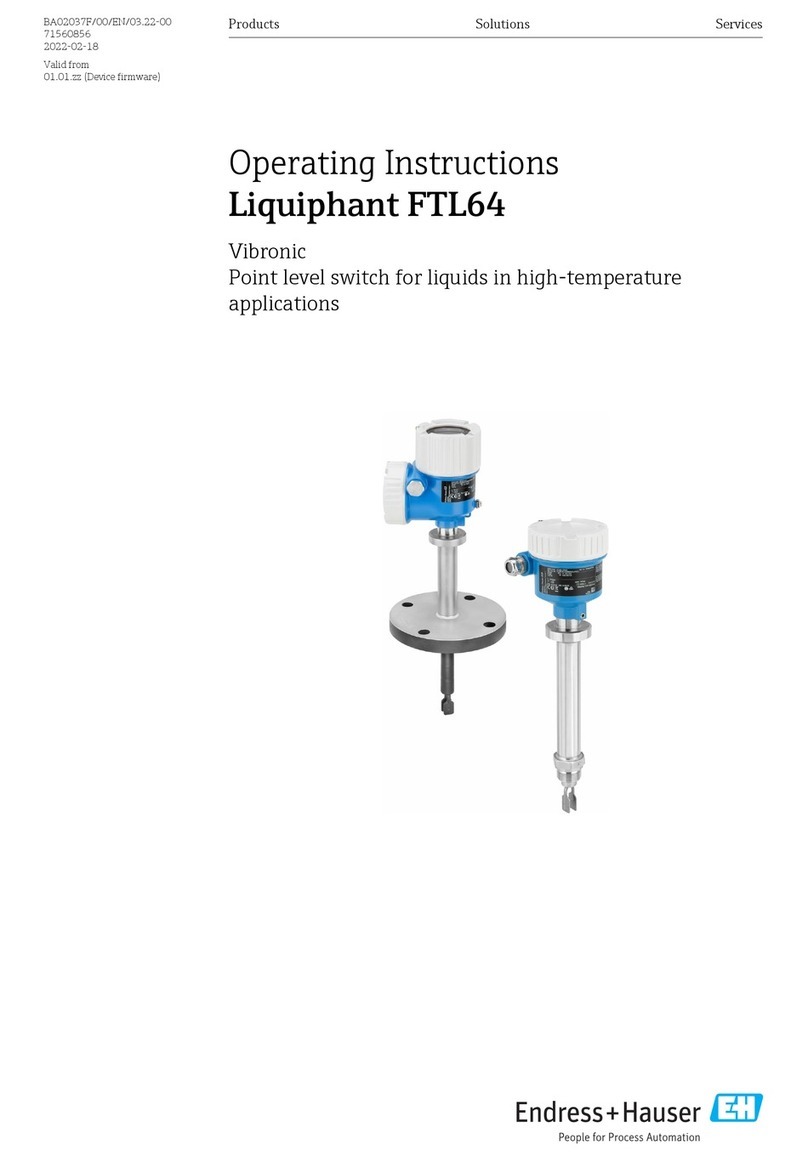
Endress+Hauser
Endress+Hauser Liquiphant FTL64 operating instructions
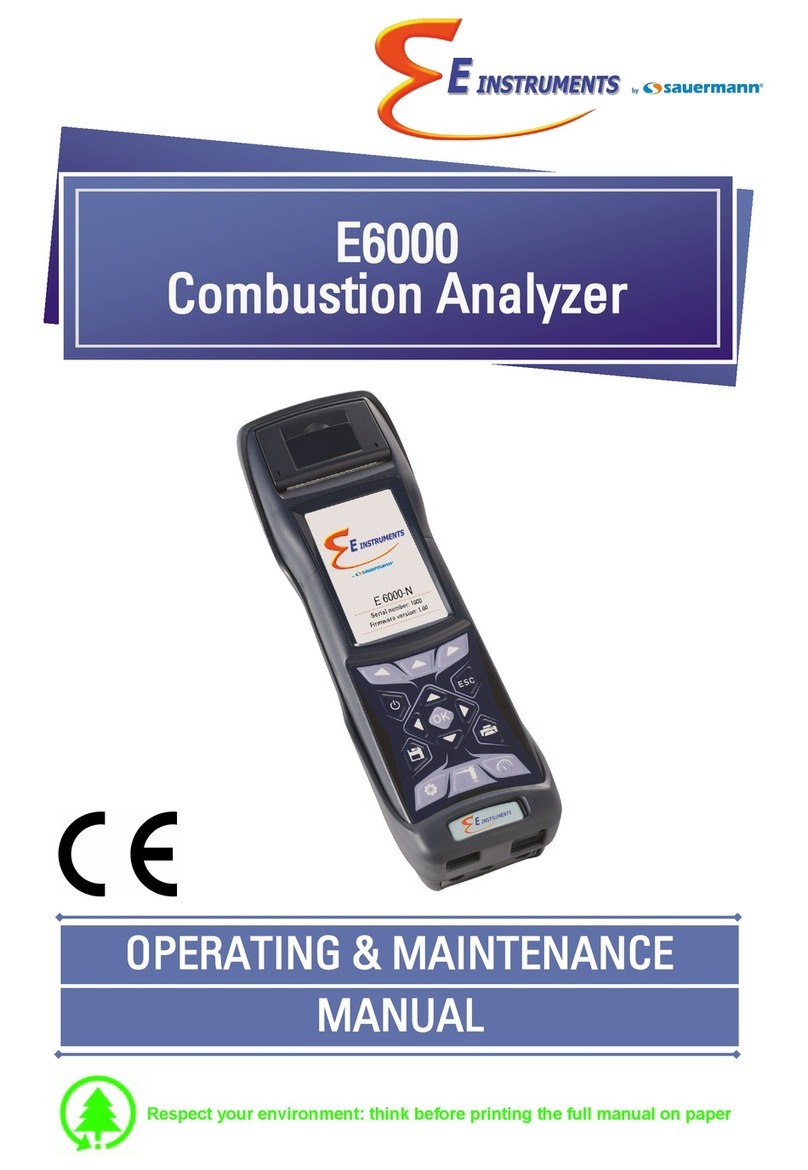
sauermann
sauermann E INSTRUMENTS E6000 operating & maintenance manual
